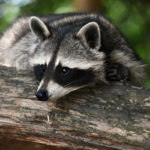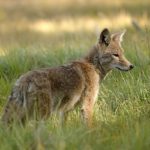Raccoons are intelligent animals and proficient climbers of the family Procyonidae. They have a small head with perky ears, and their body is covered in fur, usually gray or brown.
There are several different types of raccoons that you might encounter. The Procyon lotor, or the Northern Raccoon, is the most common raccoon in North America. But, we also have the Eastern Raccoon, Mexican Raccoon, and the Upper Mississippi Valley Raccoon. Knowing them by their name is not enough to differentiate them. So, let’s explore the different raccoon species and how they look!
Three Main Raccoon Species
There are three main types of raccoons. While you may stumble upon some of them in your area, others hide in the wild.

Procyon Lotor
The Procyon lotor, a.k.a. the common raccoon or the North American raccoon, is the most common and the largest type of raccoon in North America. These are the species that you often see lurking around your property.
It has a distinctive black mask around its eyes and a bushy tail with black rings. Its body is covered in gray or brown fur, usually between 40 and 70 centimeters long. They can have a body weight of between 5 to 26 kilograms.

Procyon Cancrivorus
The Procyon cancrivorus is also called the crab-eating raccoon. As apparent as their name suggests, these species love to eat crabs. However, they may still consume a wide food variety like other raccoons.
They are a tropical raccoon species found in the wilds of South America and some regions of Costa Rica. This type of raccoon is smaller than the Procyon lotor. Although they still possess the same characteristics as other raccoons, their skinnier and slimmer look makes them easily identifiable.

Procyon Pygmaeus
The Procyon pygmaeus is also referred to as the Cozumel raccoon or the Pygmy raccoon. Among the island raccoons, they form the fifth population. They are found in the wilds of Mexico, specifically on the island of Cozumel.
This species is the smallest among all types of raccoons. They only weigh between 1.4 to 4.5 kilograms and have a body length of 40 centimeters. But what sets them apart is the reddish-brown fur. Like its North American counterpart, this type also has a black mask around its eyes.
Sad to say, you may not see this (or only rarely) roaming in your neighborhood as they are endangered species.
Common Raccoons In North America
Aside from the three main species, there are also other types of raccoons that you may find. They might not be as popular as the three main species, but they definitely exist!

Eastern Raccoon (Procyon lotor lotor)
The first from the list is the Eastern raccoon. As its name suggests, this species is found in the eastern parts of North America. To be more specific, their natural habitat ranges from Canada all the way down to the northeastern and United States. They are also one of the most popular types of raccoons kept as pets.
One distinctive feature of this species is the black mask surrounding their eyes. Their body is also covered in gray or brown fur, which can grow up to 70 centimeters long. They are nocturnal animals, so you’ll mostly see them at night time.
Hilton Head Island raccoon (Procyon lotor salutus)
Next on the list is the Hilton Head Island raccoon. They are primarily found on Hilton Head Island in South Carolina, still present throughout the state. They are also one of the many types of raccoons that have been exported and introduced to other countries.
This species is very similar to the Eastern raccoon. The only difference is their fur color, which can be lighter or darker than the typical gray or brown. They also have a yellow patch at the back of their neck.

Chesapeake Bay raccoon (Procyon lotor maritimus)
The Chesapeake Bay raccoon is found in the coastal marshes surrounding the Chesapeake Bay. They are one of the many semi-aquatic raccoons, meaning they spend a lot of time in the water.
While the size of an adult raccoon varies considerably, one distinctive feature of this species is its slightly larger size. Their fur is also thicker and longer to protect them from the cold temperatures in their habitat.
When the bay surrounding their inhabited area is not frozen, this raccoon’s diet revolves around seawater clams. They also eat fish, frogs, small snakes, and other amphibians.

Florida raccoon (Procyon lotor elucus)
Found in the peninsula of Florida, the Florida raccoon is distinguishable for the rust metallic patch on its neck and lesser teeth than other species. They appear as humped because most of them have inflated sinuses. They are also good swimmers. This is because their webbed hind feet act as paddles when in the water.
Saint Simon Islands raccoon (Procyon lotor litoreus)
The Saint Simon Islands raccoon is found on the Saint Simon Islands off the coast of Georgia. They are one of the many island-dwelling raccoons in North America.
This species is very similar to the Eastern raccoon but has few distinctions. For one, their skulls are smaller than that of the Eastern raccoon. They also have a longer and denser coat of fur. The average length of their fur is about 10 centimeters.
Like the crab-eating raccoons, these species have specially built dentition that makes them expert hunters of crabs. They have a “mouth line with teeth” uniquely adapted for crushing the hard shells.

Key Vaca raccoon (Procyon lotor auspicatus)
Key Vaca raccoons are found on the South and Middle Keys in Florida. They get their name from the Key Vaca, one of the islands they inhabit. They are sometimes observed crossing along the bridges that connect the Florida Keys to mate with the Torch key raccoon.
This species is similar to the Florida raccoon but has a few distinctions. One is that their fur is shorter and coarser. They also have a reddish brown color than the Florida raccoon’s grayish brown.
Matecumbe Bay raccoon (Procyon lotor inesperatus)
The Matecumbe Bay raccoon is found in the Florida Keys, particularly on the Key Largo islands approaching Miami. Unlike other raccoons, these species have a smaller mask and lighter fur.

Texas raccoon (Procyon lotor fuscipes)
As the name suggests, the Texas raccoon is found in the southwestern region of the United States. Their range extends from Arkansas to Oklahoma and Texas. Texas’s northern and western regions are the only part where their presence is undetected.
Their mask is specifically jet black. While other species remain solitary, Texas raccoons choose to go against the current and become social animals. This means that they live and forage for food together with other species from their family.
In fact, a group of up to 10 of these wild raccoons is not an uncommon sight. They can invade two acres of a corn field and overturn numerous garbage cans in a neighborhood.

Alabama raccoon (Procyon lotor varius)
The Alabama raccoon is found throughout the southeastern United States. Their range extends from Virginia to Florida and Mississippi. They have yellowish fur on their backs and reddish brown on their snout area.
The Alabama raccoon is the most likely of all species to carry the roundworm parasite. This is because their diet consists mainly of crayfish, which are often infected with the worm’s larvae. If not treated, this can be fatal to both humans and animals.

Upper Mississippi Valley raccoon (Procyon lotor hirtus)
The Upper Mississippi Valley raccoon is found along the Mississippi River from Minnesota to Wisconsin. They are also present in some parts of Iowa and Illinois. This species has a thick coat of fur that helps protect them from the cold weather in their range.
The Upper Mississippi Valley raccoon is one of the largest among all raccoon species. And these species are known for their far range. They may travel as far as 6 miles to search for food.

Mexican raccoon (Procyon lotor mexicanus)
You can easily recognize the Mexican raccoon because of its unusually long snout, different from a typical raccoon. They also have broad, dark masks and bristled gray fur, becoming one of their notable features.
Mexican raccoons are large raccoons that exist throughout Mexico to the Yucatan peninsula. Most popularly in the area, they are called the Kudamundi.
Other Raccoon Species
Aside from the list above, other raccoon species include the following:
- Hoffmann’s Two-toed Sloth (Choloepus hoffmanni)
- Guadeloupe Raccoon (Procyon lotor minor)
- Sanborn’s Central American raccoon (Procyon lotor sanborni)
- Tres Marias raccoon ( Procyon lotor insularis )
Despite the rich ecosystem, it’s not avoidable that they may share similar physicalities with other mammals. But, this does not necessarily mean they belong in the same genus.
Animals that do share a similar appearance with raccoons include the Kusimanse, Bassaricyon, Binturong, Kinkajou, Olingo, and Coatis, as well as the genera Ailuridae, Canidae, Felidae, and Mustelidae.
Final Word
The raccoon family is a fascinating group of creatures that have adapted to live in a wide range of environments. They have three main species: the Procyon lotor, Procyon Pygmaeus, and Procyon Cancrivorous. Under them, some species differ in appearance, features, and location. These are the Florida raccoon, the Matecumbe Bay raccoon, the Texas raccoon, the Alabama raccoon, and the Upper Mississippi Valley raccoon.
While they may look cute and cuddly, it’s important to remember that they are wild animals and should be treated cautiously. If you’re lucky enough to spot one, enjoy the experience from a distance!
Now that you know the different kinds, it’ll be easier to identify them the next time you see one! Remember to avoid wild animals and if you’re interested in learning more about the types of raccoons and their characteristics, click here: types of raccoons. Understanding their variations can deepen your knowledge and appreciation of these remarkable creatures.
If you encounter any wildlife issues or require professional assistance, AAAC Wildlife Removal is just a call away. Our team specializes in safe and humane wildlife removal, ensuring the well-being of both humans and animals.














